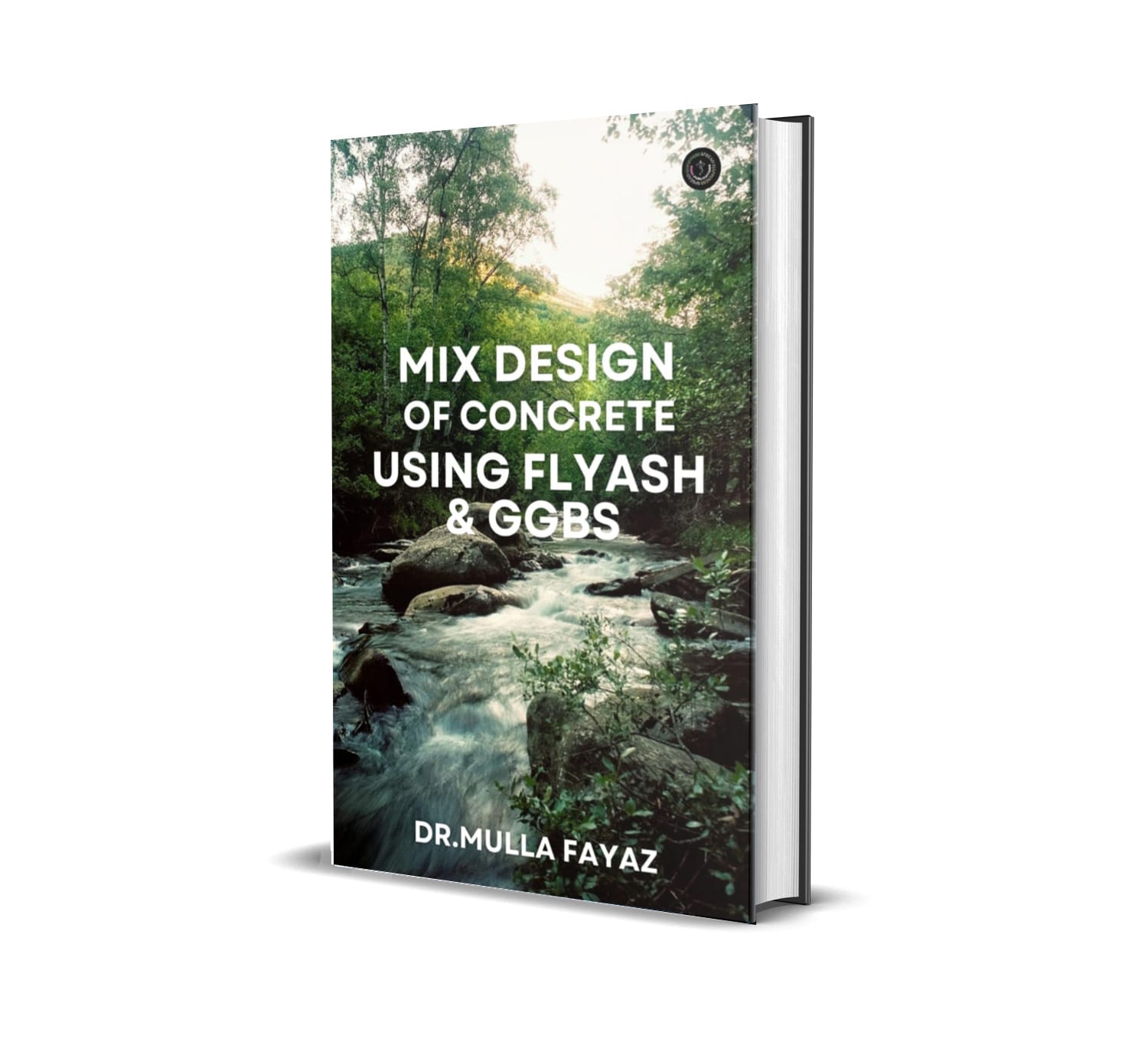Description
Concrete is the most widely used man-made construction material in the world. It is obtained by mixing of fine aggregates, coarse aggregates and cement with water and sometimes admixtures in required proportions. Fresh concrete or plastic concrete is freshly mixed material which can be molded into any shape hardens into a rock-like mass known as concrete. The hardening is because of chemical reaction between water and cement, which continues for long period leading to stronger with age. The utility and elegance as well as the durability of concrete structures, built during the first half of the last century with ordinary portland cement (OPC) and plain round bars of mild steel, the easy availability of the constituent materials (whatever may be their qualities) of concrete and the knowledge that virtually any combination of the constituents leads to a mass of concrete have bred contempt. Strength was emphasized without a thought on the durability of structures. As a consequence of the liberties taken, the durability of concrete and concrete structures is on a southward journey; a journey that seems to have gained momentum on its path to self– destruction. This is particularly true of concrete structures which were constructed since 1970 or thereabout by which time the following developments are came subsequently.
(a) The use of high strength rebars with surface deformations (HSD) started becoming common.
(b) Significant changes in the constituents and properties of cement were initiated.
(c) Engineers are started using supplementary cementitious materials (SCM) and admixtures in concrete, often without adequate consideration.
The setback in the health of newly constructed concrete structures prompted the most direct and unquestionable evidence of the last two/three decades on the service life performance of our constructions and the resulting challenge that confronts us is the alarming and unacceptable rate at which our infrastructure systems all over the world are suffering from deterioration when exposed to real environments.
The Ordinary Portland Cement (OPC) is one of the main ingredients used for the production of concrete and has no alternative in the civil construction industry. Unfortunately, in the production of cement involves emission of large amounts of carbon-dioxide gas into the atmosphere, a major contribution for green house effect and the global warming.Hence it is inevitable either to search for another material or partly replace it by some other materials to save our environment. The search for any such cementitious material, which can be used as an alternative or as a supplementary for cement should lead to global sustainable development and lowest possible environmental impact.
By doing experimental studies we found some materials like Fly ash, Ground Granulated Blast furnace Slag (GGBS), Rice husk ash, High Reactive Metakaolin, and Silica fume are some of the pozzolanic materials which having the similar properties of cement can be used in concrete as partial replacement of cement. A number of studies are going on in India as well as abroad to study the impact of use of these pozzolanic materials as cement replacements and the results are encouraging. The strength, durability, workability and other characteristic of concrete depends on the properties of its ingredients, proportion of mix, method of compaction and other controls during placing and curing.
With the passage of time to meet the demand, there was a continual quest in human being for the development of high strength and durable concrete. The history of high strength concrete is about 35 years old, in late 1960s the invention of water reducing admixtures lead to the high strength precast products and structural elements in beam were cast in situ using high strength concrete. Since then the technology has come of age and concrete of the order of M60 to M120 are commonly used. The definition of high strength concretes is continually developing. In the 1950s 34MPa was considered high strength, and in the 1960s compressive strengths of up to 52MPa were being used commercially. More recently, compressive strengths approaching 120MPa have been used in cast-in-place buildings. The advantage of prestressed concrete technology has given more impact for making concrete of high strength. In India high strength concrete is used in prestressed concrete bridges of strength from 35 MPa to 45 MPa. Presently (in 2000) Concrete strength of 75 MPa is being used for the first time in one of the flyover at Mumbai. Also in construction of containment Dome at Kaiga power project used HPC of 60MPa with silica fume as one of the constituent. In Hyderabad metro rail project they are using 60MPa for the construction of flyover bridge columns.
The reasons for these demands are many, but as engineers, we need to think about the durability aspects of the structures using these materials. With long term durability aspects kept aside we have been able to fulfill the needs. The concrete of these properties will have a peculiar Rheological behavior.
Now a day the construction industry turning towards pre-cast elements and requirement of post-tensioning has made the requirement of the high strength of concrete invariable and the engineers had to overcome these drawbacks, which to a great extent we have been able to do. But today the construction industry is to achieve the savings in concrete and also economy in financial aspects.







Reviews
There are no reviews yet.